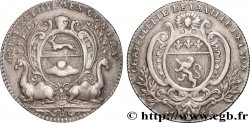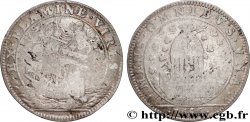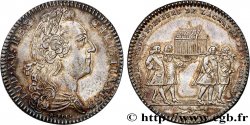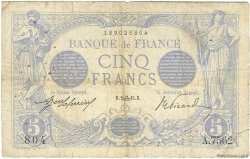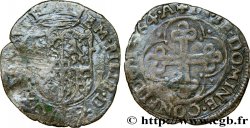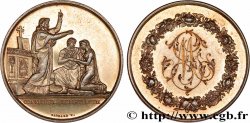fjt_01104 - CORPORATIONS - LES SIX CORPS DES MARCHANDS DE PARIS Brodeurs - Chasubliers 1704
non disponibile.
Articolo venduto sul nostro negozio (2012)
Prezzo : 180.00 €
Articolo venduto sul nostro negozio (2012)
Prezzo : 180.00 €
Tipo : Brodeurs - Chasubliers
Data: 1704
Metallo : argento
Diametro : 28,5 mm
Asse di coniazione : 6 h.
Orlo : lisse
Grado di rarità : R2
N° nelle opere di riferimento :
Diritto
Titolatura diritto : MARCHANDS. BRODEURS. CHASUBLIERS.
Descrittivo diritto : Armes des marchands brodeurs - chasubliers.
Rovescio
Titolatura rovescio : SANS. VOUS. IE. NE. PUIS. VIVRE ; À L'EXERGUE : 1704.
Descrittivo rovescio : Un jardin de plantes tinctoriales sous le soleil.
Commento
Ce jeton marque en 1704 la redéfinition des statuts qui réduisent le nombre de maîtres brodeurs à 200. La volonté est de revenir au même nombre qu'au XIIIe siècle, pour conserver une bonne organisation intérieure et préserver les traditions de cet art.
Les ouvrages de cette communauté ne se bornaient pas aux ornements d'église dont les chasubliers avaient le privilège. Ils comprenaient entre autres les broderies d'uniformes pour les compagnies militaires.
Le choix des plantes tinctoriales comme revers fait tout à fait sens pour une corporation dont la matière première était l’étoffe et le fil.
This token marks the redefinition of the statutes in 1704, which reduced the number of master embroiderers to 200. The aim was to return to the same number as in the 13th century, to maintain good internal organization and preserve the traditions of this art. The works of this community were not limited to the church ornaments for which the chasuble makers had the privilege. They included, among other things, the embroidery of uniforms for military companies. The choice of dye plants as the reverse makes perfect sense for a corporation whose raw material was fabric and thread.
Les ouvrages de cette communauté ne se bornaient pas aux ornements d'église dont les chasubliers avaient le privilège. Ils comprenaient entre autres les broderies d'uniformes pour les compagnies militaires.
Le choix des plantes tinctoriales comme revers fait tout à fait sens pour une corporation dont la matière première était l’étoffe et le fil.
This token marks the redefinition of the statutes in 1704, which reduced the number of master embroiderers to 200. The aim was to return to the same number as in the 13th century, to maintain good internal organization and preserve the traditions of this art. The works of this community were not limited to the church ornaments for which the chasuble makers had the privilege. They included, among other things, the embroidery of uniforms for military companies. The choice of dye plants as the reverse makes perfect sense for a corporation whose raw material was fabric and thread.








 Segnalare un errore
Segnalare un errore Stampate la pagina
Stampate la pagina Condividi mia selezione
Condividi mia selezione Fai una domanda
Fai una domanda Consegnare / vendere
Consegnare / vendere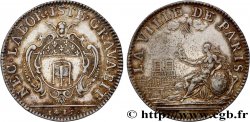
 Descrittivo
Descrittivo